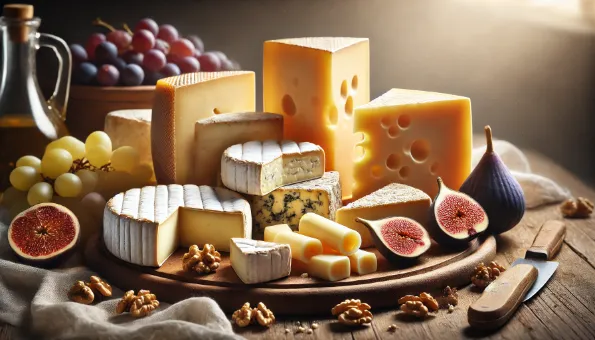Cheese: Nutritious, Flavorful & Versatile
Protein- and calcium-rich dairy—hundreds of varieties from fresh and mild to aged and sharp.

What Is Cheese?
Cheese is made by **coagulating milk proteins** (casein) and separating curds from whey. It can be made from cow, goat, sheep, or even buffalo milk, with endless varieties including fresh (ricotta), semi-soft (brie), hard (cheddar, parmesan), and blue cheeses.
Nutrition Profile
Per 30 g (1 oz) average cheese: **~100–120 kcal**, **6–8 g protein**, **8–10 g fat**, **~200 mg calcium**, vitamins **A, B12**, phosphorus, zinc. Sodium varies widely by type.
Health Benefits
- **High-quality protein** for muscle repair.
- **Calcium & phosphorus** for bones and teeth.
- **Vitamin B12 & zinc** for energy metabolism and immunity.
- **Probiotics** in aged/raw cheeses may support gut health.
Possible Downsides
- **Saturated fat & sodium**: excess intake may affect heart health.
- **Lactose intolerance**: aged cheeses usually lower in lactose, but fresh cheeses may cause issues.
- **Calories**: can add up quickly—watch portions.
How to Use
- **Snacking:** pair with fruit or nuts.
- **Cooking:** melt in sandwiches, pasta, gratins.
- **Finishing:** shave parmesan over salads or soups.
- **Boards & pairings:** combine with wine, crackers, olives.
Tip
For better balance, choose **strongly flavored cheeses** (you use less), pair with **whole grains & veggies**, and store properly wrapped to avoid drying out.
- 1. Cheese
Cheese – fermentirani mliječni proizvod, stotine vrsta od blagih do zrelih; izvor proteina, kalcija i masti

